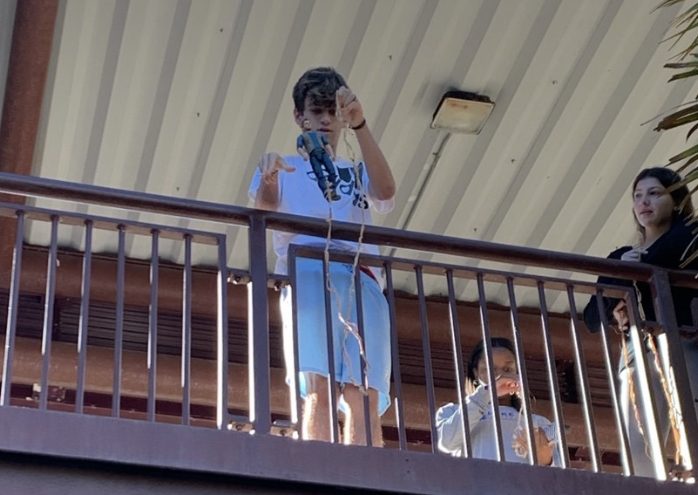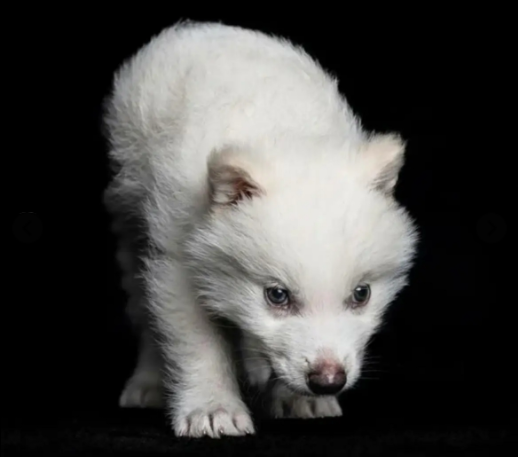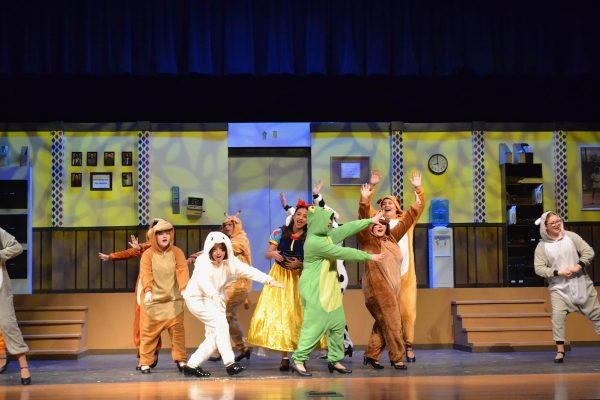AP Statistics Students Let Barbies Take a Leap of Faith
Junior Christian Daru drops his group’s Barbie off the top of the balcony in front of the media center. Daru and his group were able to win the second round of the competition. Photo courtesy of Zach Babajanof-Rustrian.
On Oct. 4, anyone walking out of the guidance office was at risk of having a Barbie doll dropped on their head. For the last four years, AP Statistics teacher Marie Puskas, has held a competition- that she playfully dubbed the Barbie Bungee Jump.
Student groups compete to see who can get their Barbie closest to the ground without the doll’s head hitting the concrete. They attached rubber bands to the bottom of the Barbie’s feet that way when they drop, the doll’s head doesn’t collide with the concrete.
“The students take an initial data collection [of] two quantitative variables,”explained Puskas. “Students describe the distribution, create a LSRL [Least Squares Regression Line], interpret slope, y-intercept, r2, the residual plot… and then we talk about why extrapolation is ‘bad statistics’.”
The skills and knowledge employed in The Barbie Bungee Jump also coincide with other classes such as physics. “It’s fun and helps break the mold of lecture and will help students with ownership and being able to take ownership of their learning,” Puskas explained. “The whole unit uses a project-based learning model.” Puskas is known for using creative and alternative teaching strategies to make learning fun for the students.“It has absolutely changed student attitudes towards learning difficult content,” Puskas said.
Senior Isabelle Osorio of Puskas’ second period class agrees. “It was [a] useful [way to] understand the content because I can just think about the Barbie Bungee Jump on the AP exam to remember the equations and concepts.”
Your donation will support the student journalists of Steinbrenner High School. Your contribution will allow us to purchase equipment and cover our annual website hosting costs.






